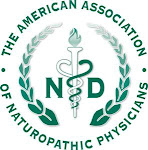AANP President
Photo courtesy of psdGraphics.
In my daily practice life as well as my "political" life as AANP President, I am always on the lookout for trends and conditions in my communities, both local and national, that have effects on my practice and my profession. I came across some news recently that caught my eye and has had me thinking about its ramifications.Along with being licensed as a naturopathic doctor here in California, I have also carried an acupuncture license since 1989 and have been a long time member of the American Association of Acupuncture and Oriental Medicine (AAAOM) as well as my state acupuncture association. Recently, the AAAOM published a study of the acupuncture profession that found, among other things, that despite the prevalent use of acupuncture in the United States, the demonstrated cost-savings and effectiveness of acupuncture treatment, and the wide reimbursement by third party payers, many licensed acupuncturists are finding it hard to make ends meet.
In John Week's Integrator Blog, he quotes Lisa Rohleder, LAc and co-founder of the Community Acupuncture Network, who concludes that "Acupuncture education, and the conventional acupuncture business model, ought to come with a warning label, the way cigarettes do: NOT SUSTAINABLE. May take years of your life and leave you with nothing, except huge student loans."
In short, licensed acupuncturists graduate and get licensed, but then struggle for years to pay off student loans and get paid appropriately for their education and skills. Many encounter barriers in third party reimbursement. Many fail.
Sound familiar?
As naturopathic physicians, many of us feel that one of the reasons it is hard to make a decent living is that many people out there just don't know what an ND is. But is that truly the case? It seems to me that most if not all people know something about acupuncture -- what it looks like, what it's good for (at least pain, anyway). And yet acupuncturists are dealing with some of the same frustrations and challenges that affect the naturopathic profession.
As I said before, this has given me much to think about, and I've come to some conclusions.
First, the good news: we are not alone. If LAcs are struggling with these issues, you can bet that it's affecting other "CAM" providers. We tend to think we are unique, but maybe not so much.
Next, knowing that these challenges exist, we can and must do better on all levels. Our colleges have to do a better job at preparing our graduates to enter the healthcare marketplace. The AANP has to be more active at developing programs and resources for our member physicians in order to help them excel in the business of naturopathic medicine. Our state organizations must help build awareness of our profession and, together with the AANP, "brand" naturopathic medicine as a desired choice for patients. The AANP and the states must work together better to strengthen laws and policies that allow access to naturopathic care via state and federal programs and remove the unfair barriers to naturopathic physicians in federal and state health programs. For example, did you know that while the Department of Education recognizes ND educational programs as on par with MD and DO training, we are still effectively shut out of loan repayment programs for our ND graduates? If this is not unfair, I don't know what is.
Our graduates (you) have to take the individual initiative to learn the elements of successful practice and focus on the business of our medicine as well as its practice. There are pages devoted to practice growth and success on the AANP website. Log-in and then visit select "Practice Resource Library" after clicking on "Practice Tools." There are several courses taught by successful NDs that will help new graduates learn the tools to be successful. The resources are out there and we must take the responsibility to use them.
When I graduated from Bastyr in 1984, there were few choices for people entering the profession. One could go into a solo practice, perhaps join a small group practice, teach at one of the schools, or maybe work for a supplement company. Now I'm amazed at the choices graduates have, and I am particularly excited to see the increasing opportunities in integrative medical settings for us to take our place alongside our "mainstream" colleagues. I, for one, think our profession could do much more to prepare our graduates to enter these new medical settings.
I can tell you that, both individually and collectively, we are up for these challenges. "The cream rises to the top," it's said, and naturopathic medicine is the gold standard for people seeking new choices and new directions for their healthcare.






